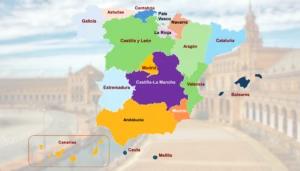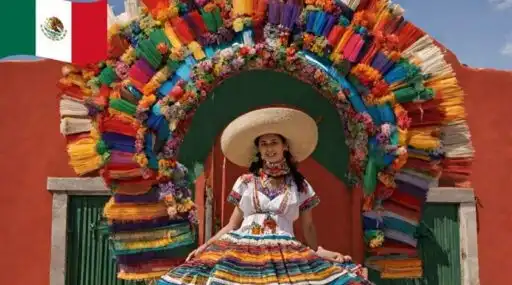The concept of the Spanish siesta has permeated global perceptions of Spanish culture, often conjuring images of sun-drenched landscapes, quiet afternoons, and a collective pause in the day’s activities. The siesta, a brief midday rest, has become a symbol of Spain, embodying a laid-back lifestyle and a unique approach to time. However, like many cultural phenomena, the Spanish siesta is more nuanced than the stereotype suggests. In this exploration, we will delve into the origins, cultural significance, and evolving realities of the Spanish siesta, addressing common myths and revealing the deeper truths that shape this intriguing aspect of Spanish daily life.
Origins of the Siesta:
The Spanish siesta has roots that extend deep into history, intertwining with the country’s climatic conditions, agrarian traditions, and cultural practices. The term “siesta” itself is derived from the Latin word “hora sexta,” meaning the sixth hour, referring to the practice of taking a break around the sixth hour after dawn.
Historically, Spain’s predominantly agricultural economy played a pivotal role in shaping the siesta. The intense midday heat, particularly during the scorching summer months, made it impractical for laborers to toil in the fields. As a result, people sought respite from the sun, retreating indoors to rest, eat, and rejuvenate before returning to work in the cooler evening hours.
Cultural Significance of the Siesta:
Beyond its practical origins, the siesta has acquired cultural significance that goes beyond a simple nap. It reflects Spain’s unique approach to time, which places importance on a balanced life that includes both work and leisure. The siesta embodies the idea of taking a pause in the day to prioritize well-being, family, and relaxation.
During the siesta hours, many businesses close, and streets in smaller towns become noticeably quieter. The rhythm of life slows down, creating an atmosphere conducive to rest and reflection. Family lunches are a common tradition during the siesta, bringing loved ones together to share a meal and connect before the second half of the day begins.
Urbanization and Changing Lifestyles:
While the siesta’s origins lie in agrarian traditions, Spain has undergone significant urbanization and industrialization in recent decades. The shift from an agrarian to an industrial and now a service-based economy has transformed work patterns and lifestyles. In urban areas, where air-conditioned offices and modern infrastructure mitigate the impact of midday heat, the strict adherence to the siesta has diminished.
In larger cities like Madrid and Barcelona, the traditional siesta has evolved into a shorter break or even disappeared altogether in many sectors. The competitive demands of the globalized economy have influenced work habits, and the pace of life in urban centers has accelerated.
Regional Variations:
It’s important to note that Spain is a diverse country with distinct regional cultures and traditions. The adherence to the siesta can vary significantly between regions. In southern Spain, where the heat is more intense, the siesta may still be more widely observed. In contrast, in the cooler northern regions or bustling urban centers, the midday break may be less pronounced.
Additionally, regional festivities and traditions can influence daily schedules. For example, in some regions, the post-siesta evening hours may be dedicated to socializing, dining, and enjoying cultural events. Understanding the regional variations is crucial to appreciating the complexity of the siesta’s role in Spanish life.
Dispelling Myths about the Siesta:
1. Universal Midday Naps:
– One common misconception about the siesta is that it involves a universal midday nap for all Spaniards. While some individuals may choose to rest during the siesta, it is not a universal practice. In fact, many urban professionals may use the break for a quick lunch or other non-restful activities.
2. Extended Closing of Businesses:
– Another myth is the notion that all businesses shut down for several hours during the siesta. While it is true that some smaller businesses, especially in rural areas, may close for a more extended period, many urban establishments operate with reduced hours or remain open throughout the day.
3. Lazy or Unproductive Culture:
– The siesta has sometimes been unfairly associated with a perception of laziness or unproductivity. In reality, the cultural emphasis on work-life balance and the importance of family during the siesta align with broader values of well-being and connection.
4. Outdated Tradition:
– Some portray the siesta as an outdated tradition that no longer holds relevance in modern Spanish society. However, while its practice may have evolved, the siesta continues to be a meaningful aspect of Spanish culture, albeit with variations across regions and urbanization levels.
The Siesta in Contemporary Spain:
In contemporary Spain, the siesta’s role is shaped by a myriad of factors, including lifestyle changes, economic shifts, and global influences. The rhythm of the siesta may not be as pronounced as in the past, but its essence endures, adapting to the evolving needs of society.
1. Work-Life Balance:
– Despite changes in work habits, the Spanish commitment to work-life balance remains strong. The siesta, even in modified forms, reflects a cultural acknowledgment of the importance of taking breaks and fostering personal well-being.
2. Cultural Celebrations and Festivities:
– The siesta becomes particularly vibrant during cultural celebrations and festivities. In many regions, especially during traditional festivals, the siesta takes on a festive dimension, with communities coming together for communal meals, music, and dance.
3. Resurgence of the Midday Break:
– In recent years, there has been a resurgence of interest in the benefits of short breaks during the workday for mental health and productivity. Some businesses are adopting flexible schedules that incorporate brief breaks, aligning with the spirit of the siesta.
4. Tourism and Urban Lifestyle:
– In tourist-centric areas and bustling urban centers, the siesta may be less noticeable as businesses cater to the demands of a 24/7 lifestyle. However, the siesta’s cultural imprint persists in the pace of life, social interactions, and the overall attitude toward time.
Cultural Perspectives on the Siesta:
To truly understand the siesta, it is essential to consider it within the broader context of Spanish culture. The siesta is not merely a break in the day; it is a cultural practice deeply intertwined with values, relationships, and the appreciation of life’s simple pleasures.
1. Connection to Nature:
– The siesta’s historical connection to the agricultural calendar reflects a profound respect for nature’s rhythms. Taking a break during the hottest part of the day aligns with the understanding that humans are interconnected with the natural environment.
2. Social Bonds and Family Values:
– The siesta fosters social bonds and family values. The emphasis on shared meals and quality time during the midday break reinforces the importance of family and community in Spanish culture.
3. Mindful Living:
– Spain’s approach to time, epitomized by the siesta, reflects a mindful and unhurried attitude toward life. It encourages individuals to savor moments, appreciate relationships, and find joy in the simple act of being.
4. Celebration of Culinary Arts:
– The siesta provides an opportunity to indulge in Spain’s rich culinary traditions. The leisurely midday meal is a celebration of the country’s diverse and flavorful cuisine, emphasizing the importance of savoring food and socializing over shared dishes.
Conclusion:
In the tapestry of Spanish culture, the siesta emerges as a thread that weaves together tradition, adaptation, and the essence of mindful living. Far from being a mere midday nap, the siesta is a reflection of Spain’s cultural values, its historical connection to agriculture, and a commitment to a balanced and fulfilling life.
As Spain navigates the complexities of modernization and global influence, the siesta stands resilient, evolving to suit contemporary lifestyles while retaining its core principles. To embrace the Spanish siesta is to appreciate the beauty of taking a moment to rest, connect with loved ones, and savor the richness of life—a practice that transcends stereotypes and reveals the depth of Spain’s cultural heritage. The siesta, myth or truth, continues to be a captivating chapter in the ongoing story of Spain, inviting the world to pause, reflect, and experience the magic of a culture that dances to its own rhythm.

















































Leave a Reply